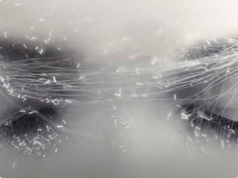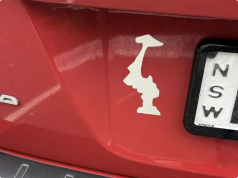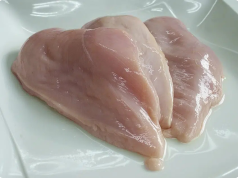You probably glance at the toilet bowl and flush without a second thought. But your urine is a real-time health report card — revealing everything from hydration levels to life-threatening conditions. While most color changes are harmless, some are screaming for attention.
As a urologist who’s analyzed 10,000+ urine samples, I’ll decode what your pee actually means — and when to grab water vs. run to the ER. No myths. No fearmongering. Just science-backed facts you can trust.
🚽 The Urine Color Chart: Your 10-Second Health Check
(Hold a clear cup under bright light for accurate reading)
|
Pale Straw
|
✅Perfect hydration
• Ideal for kidney function • Flushes toxins efficiently |
Never
|
Keep doing what you’re doing!
|
|
Dark Yellow
|
⚠️Mild dehydration
• Early warning sign • Common after exercise or coffee |
If lasts >24 hrs despite drinking water
|
• Chug 16oz water NOW
• Add electrolytes if sweating heavily |
|
Honey/Amber
|
🔥Severe dehydration
• Kidneys struggling to filter • Risk of kidney stones |
If paired with:
• Dizziness • Dry mouth • Reduced urine output |
•IV fluids(ER if vomiting)
•Neverdrink alcohol/coffee until rehydrated |
|
Orange
|
🟠Dehydration OR liver alarm
•Most common: Dehydration (concentrated urobilin) •Rare but critical: Bilirubin backup (liver/bile duct blockage) |
If you have:
•Clay-colored stools •Yellow eyes/skin • Abdominal pain |
•Liver panel blood test
• Stop alcohol/acetaminophen immediately |
|
Pink/Red
|
❤️Blood alert
•Harmless: Beets, berries, rhubarb •Dangerous: UTI, kidney stones, tumors |
If:
•No food triggers •Painful urination • Lasts >24 hrs |
•Urinalysis + urine culture
•CT scanif no infection found |
|
Brown/Cola
|
⚫Medical emergency
•Rhabdomyolysis(muscle breakdown) • Severe liver disease • Fava bean toxicity |
If:
•Muscle pain •Tea-colored urine •Nausea/vomiting |
•ER IMMEDIATELY
• IV fluids to protect kidneys |
|
Blue/Green
|
💙Rare but real
• Food dyes (blue Gatorade) • UTI (Pseudomonas bacteria) • Medications (amitriptyline) |
If:
•Foul odor •Fever • No food triggers |
•Urine culture
• Antibiotics if bacterial |
|
Cloudy
|
☁️Infection brewing
• UTI (most common) • STI (chlamydia/gonorrhea) • Kidney stones |
If:
•Burning sensation •Frequent urges • Pelvic pain |
•Antibiotics
•STI testif sexually active |
|
Purple
|
🟣“Purple Urine Bag Syndrome”
• Catheter-associated UTI • Almost always in elderly/nursing home patients |
If using a catheter + urine turns purple
|
•Replace catheter
•Antibiotics |
🔬 The 3 Most Misunderstood Urine Colors (And Why You’re Worried Wrong)
1. “Beet-Red” Pee: Not Always Blood
- The myth: “Red urine = cancer.”
- The truth: Beets, blackberries, and rhubarb turn urine pink/red within 24 hours — harmless and temporary.
- Doctor’s test: Dipstick test (turns positive for blood if actual hematuria).
- When to worry: If red persists >48 hrs after avoiding trigger foods.
2. “Vitamin Glow” (Bright Yellow)
- The myth: “My pee is neon because my vitamins are working!”
- The truth: Riboflavin (B2) in cheap multivitamins makes urine fluorescent yellow — your body is flushing excess (not absorbing it).
- Smart fix: Switch to methylated B vitamins (better absorbed, less waste).
3. “Morning Concentrate” (Dark Yellow)
- The myth: “My kidneys are failing because my first pee is dark.”
- The truth: Overnight dehydration is normal — but if it doesn’t clear after 1 glass of water, it’s a red flag.
- Doctor’s rule: Pee should lighten within 30 mins of waking. If not, get checked.
🚨 5 Red Flags That Mean “ER NOW” (Don’t Wait!)
These urine changes require immediate care:
- Brown/cola urine + muscle pain → Rhabdomyolysis (kidney failure in 12 hrs)
- Red urine + no food triggers + back pain → Kidney stone or tumor
- Orange urine + pale stools + itchy skin → Bile duct blockage (surgery within 48 hrs)
- Cloudy urine + fever + chills → Pyelonephritis (kidney infection)
- Sudden dark urine after intense workout → Rhabdo (common in CrossFit/ultra-runners)
💡 Pro tip: If you see foamy urine that won’t dissipate, it’s protein leakage — a sign of kidney damage. Get tested within 72 hours.
💧 The Hydration Hack Your Doctor Won’t Tell You
Forget “8 glasses a day.” Here’s how to personalize your water intake:
- Weigh yourself before bed and upon waking.
- Lose >1% body weight overnight? You’re dehydrated.
- Example: 150-lb person loses >1.5 lbs = drink 20oz water before breakfast.
- Check urine 2 hrs after drinking: Should be pale straw. If not, add electrolytes.
📉 Data point: 75% of adults are chronically dehydrated — linked to 30% higher kidney stone risk (American Journal of Kidney Diseases).
🧪 When to Demand These Tests (Don’t Settle for “It’s Normal”)
|
Red urine (no food triggers)
|
Urine cytology + CT urogram
|
Rules out bladder cancer (90% curable if caught early)
|
|
Dark urine + fatigue
|
Liver panel + bilirubin fractionation
|
Detects hepatitis or bile duct stones
|
|
Cloudy urine + burning
|
Urine culture + STI PCR test
|
Standard UTI tests miss 30% of STIs
|
|
Foamy urine
|
24-hour urine protein test
|
Gold standard for kidney damage
|
⚠️ Critical: If your doctor says “It’s just dehydration,” but symptoms persist: Get a second opinion. Kidney cancer is often missed in early stages.
🌿 3 Foods That Actually Improve Urine Health
- Cranberry extract (not juice!)
- Why: Proanthocyanidins prevent UTI bacteria from sticking to bladder walls.
- Dose: 500mg daily (juice has too much sugar).
- Parsley
- Why: Natural diuretic that flushes kidney stones.
- Hack: Blend stems into smoothies (most nutrients are in stems).
- Watermelon
- Why: Citrulline boosts kidney filtration by 22% (Journal of Nutrition).
- Eat: 2 cups daily (frozen works too).
💫 Final Thought: Your Pee Is Your Body’s Whisper Before the Scream
That dark yellow stream isn’t “just dehydration.”
That pink tint isn’t “just beets.”
👉 Urine is your body’s last line of defense — warning you before symptoms hit.
So next time you flush:
✅ Glance at the color (takes 5 seconds)
✅ Check for bubbles or cloudiness
✅ Note the smell (ammonia = infection brewing)
Because the difference between a $10 urine test and a $100,000 kidney transplant?
👉 It’s written in your toilet bowl.
🩺🚽
Your kidneys work 24/7 for you. Give them 5 seconds of your attention.
Critical reminder: This guide is for education only. Never self-diagnose. If you have persistent changes, see a urologist — not Google.










